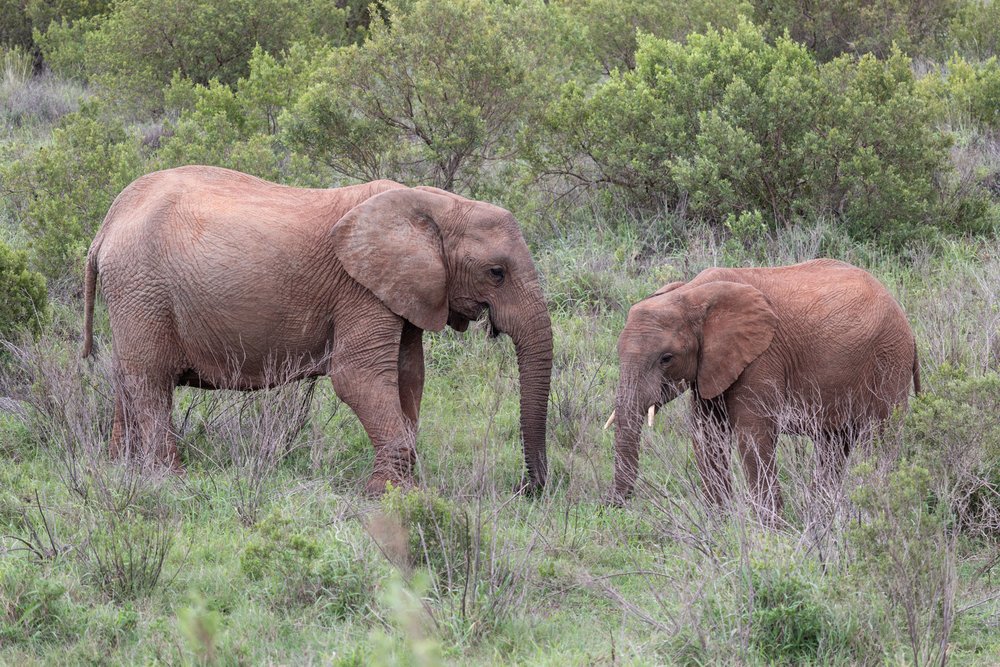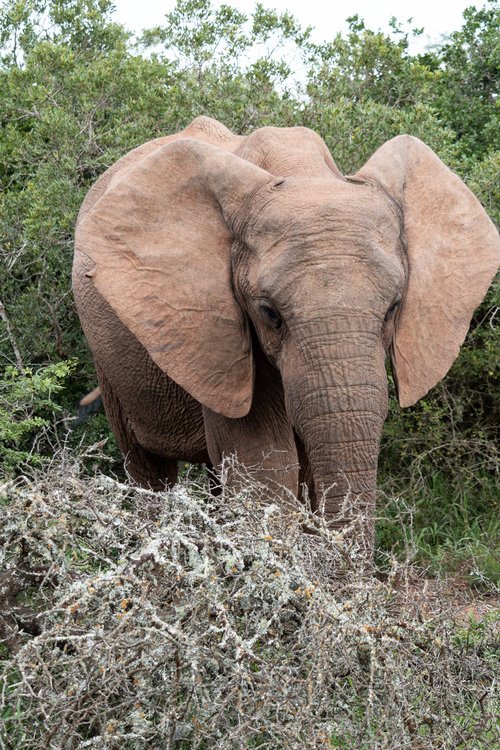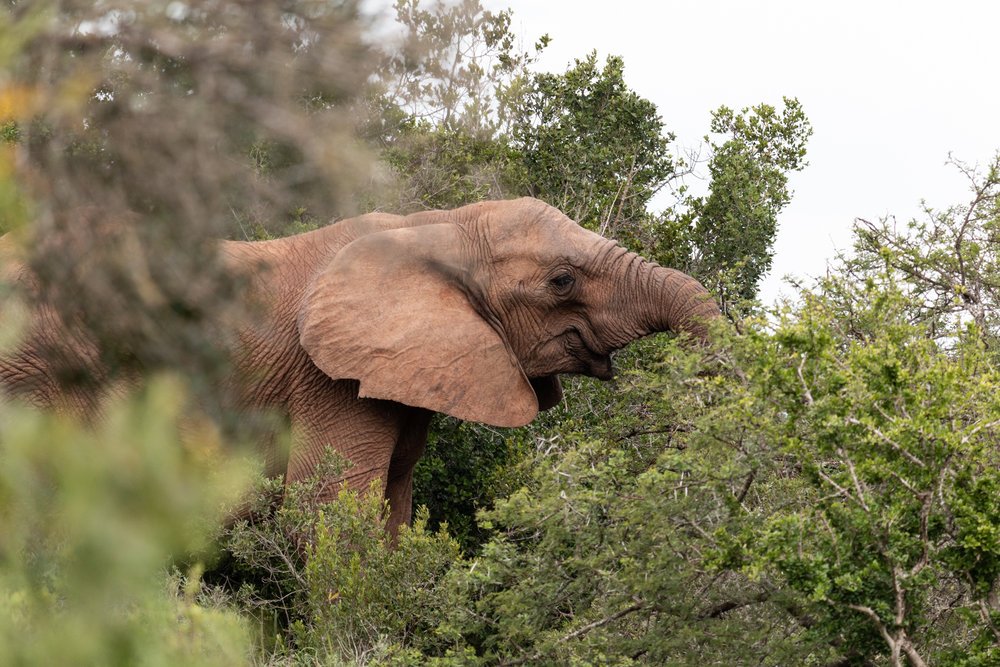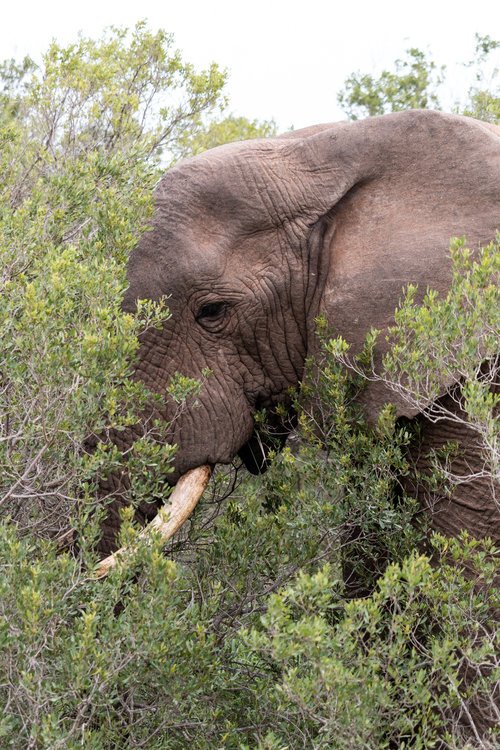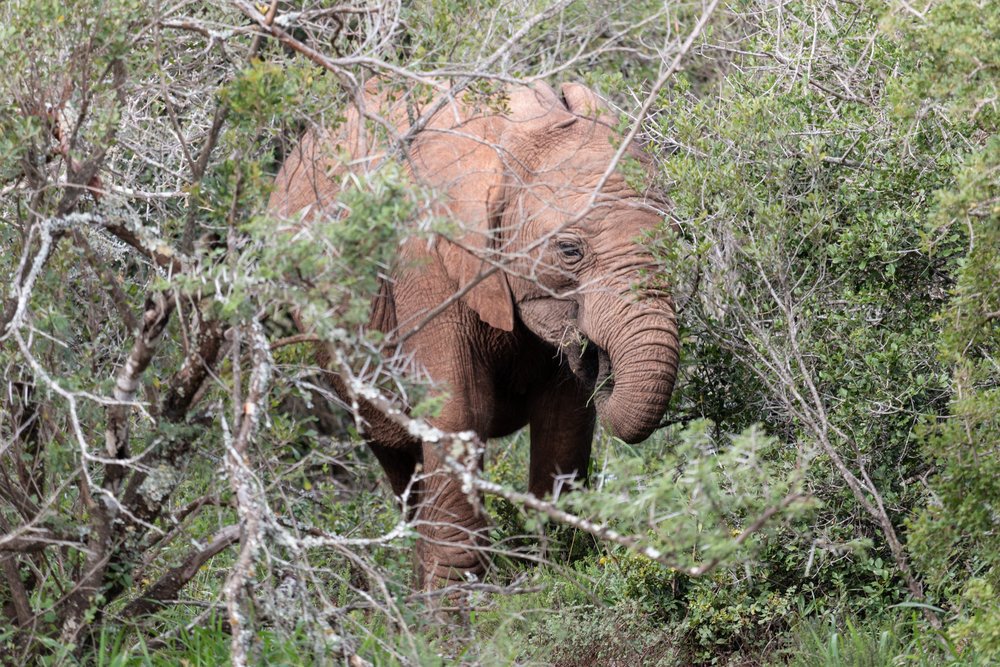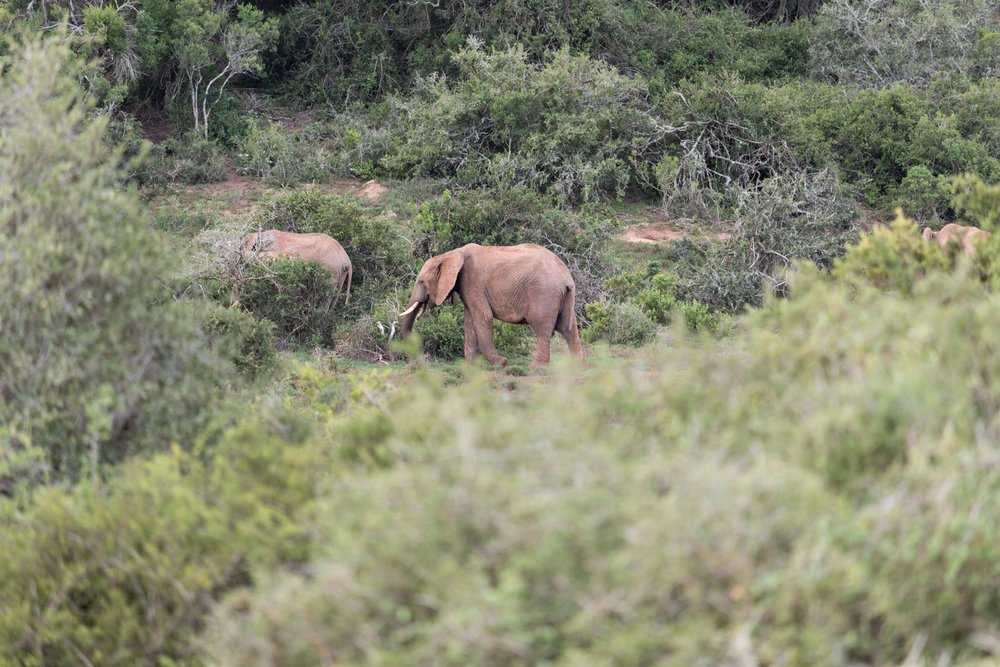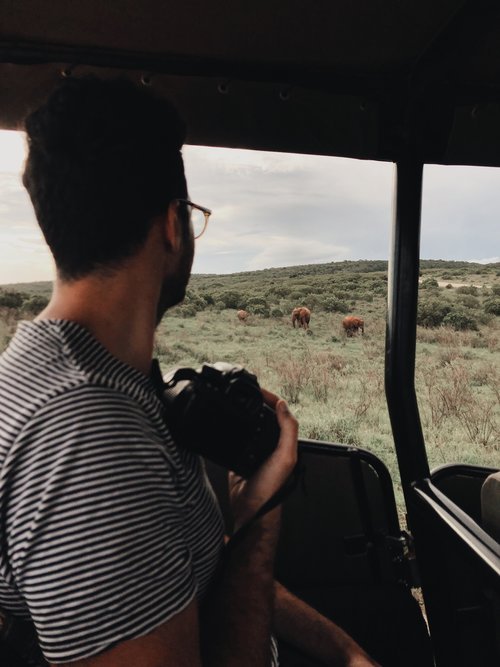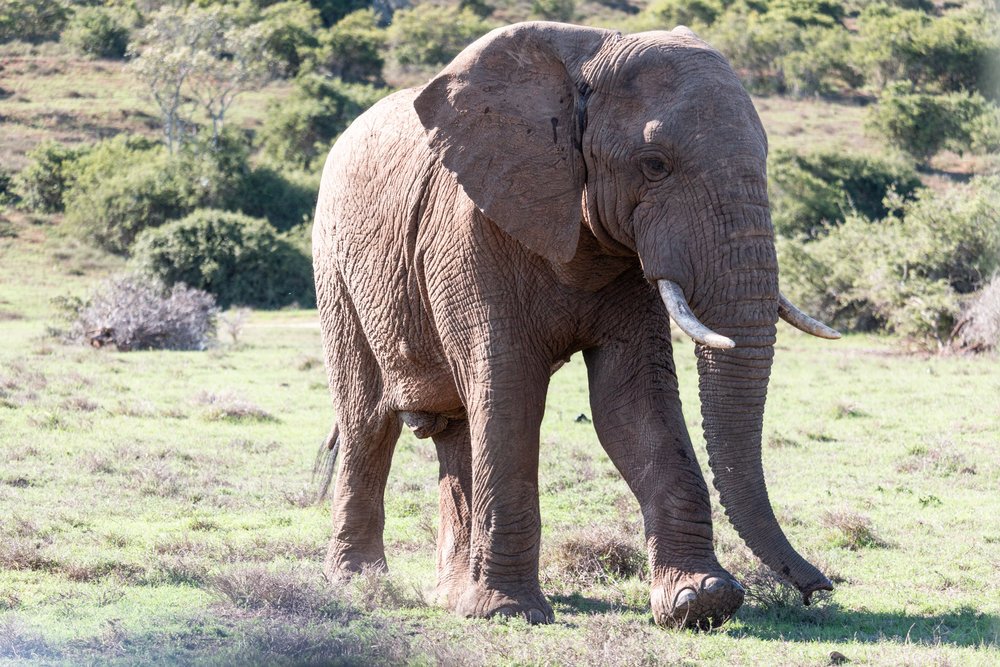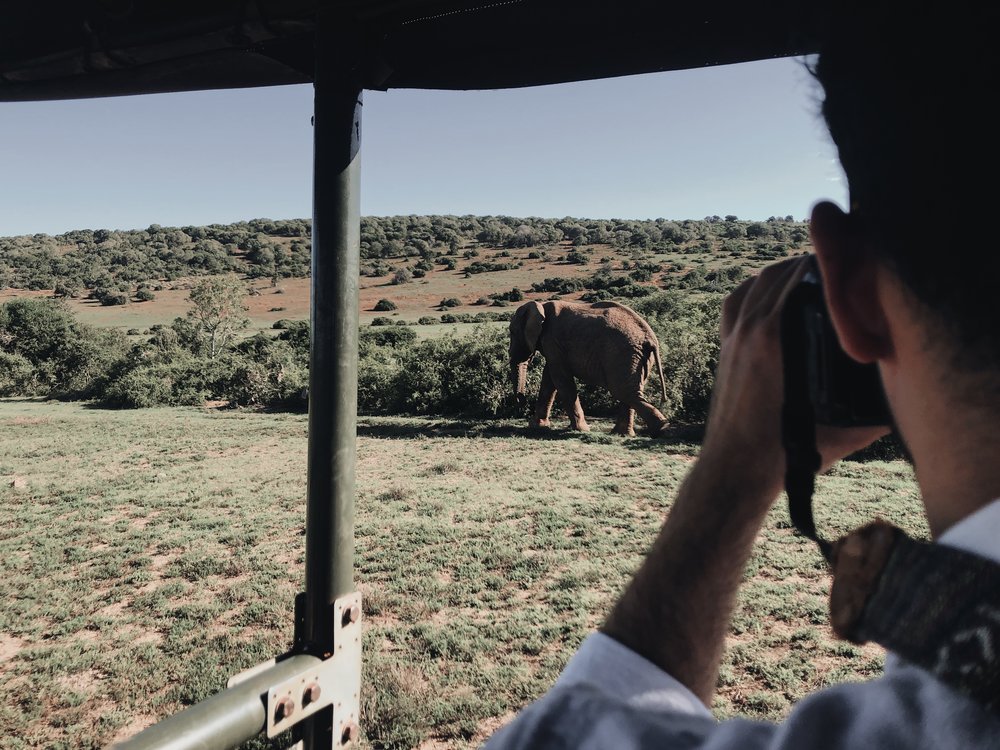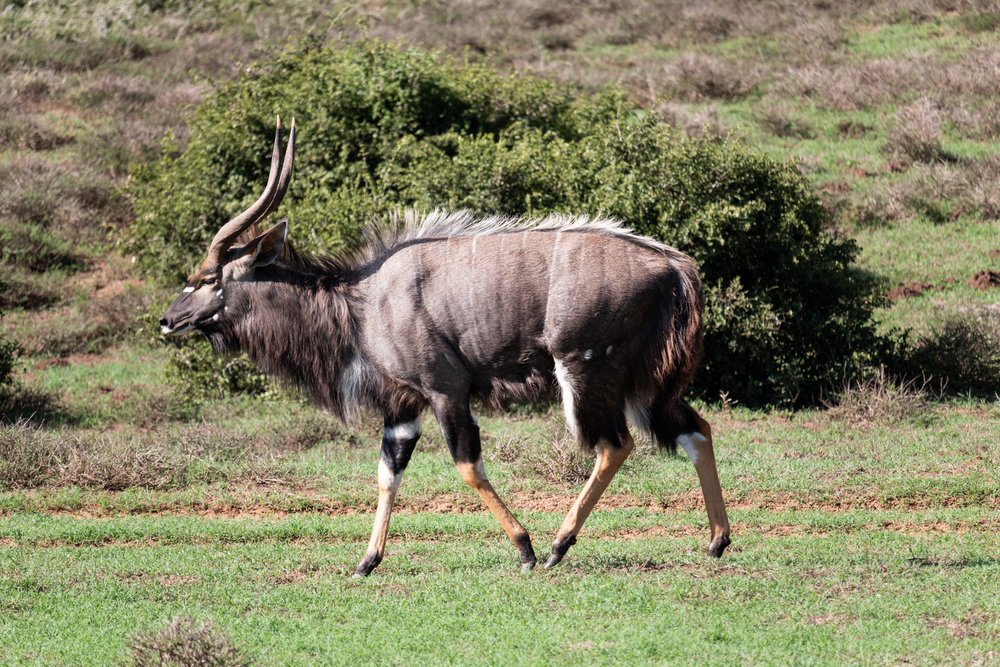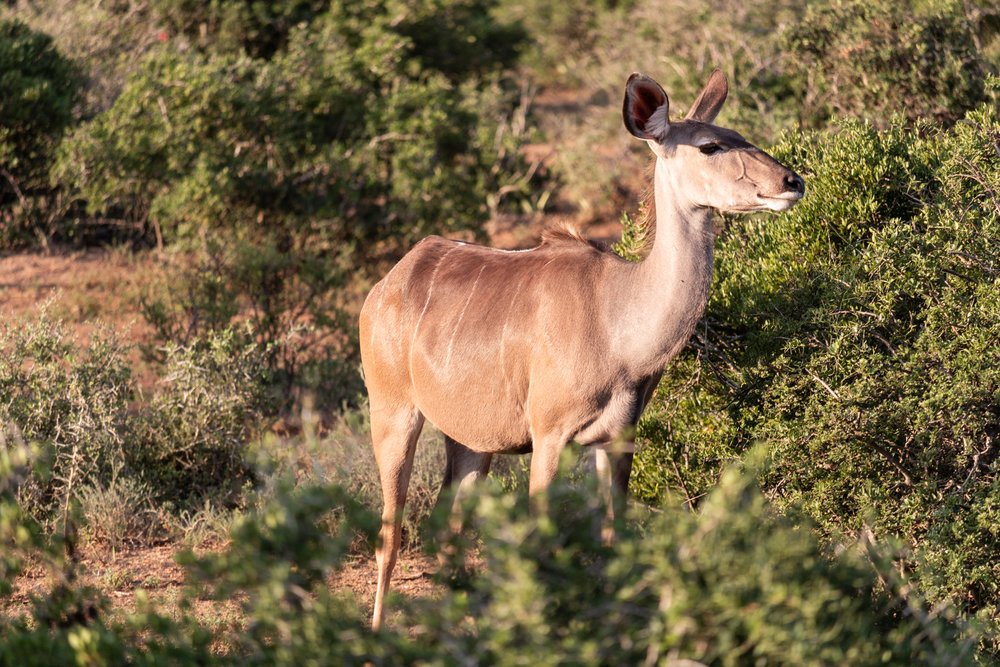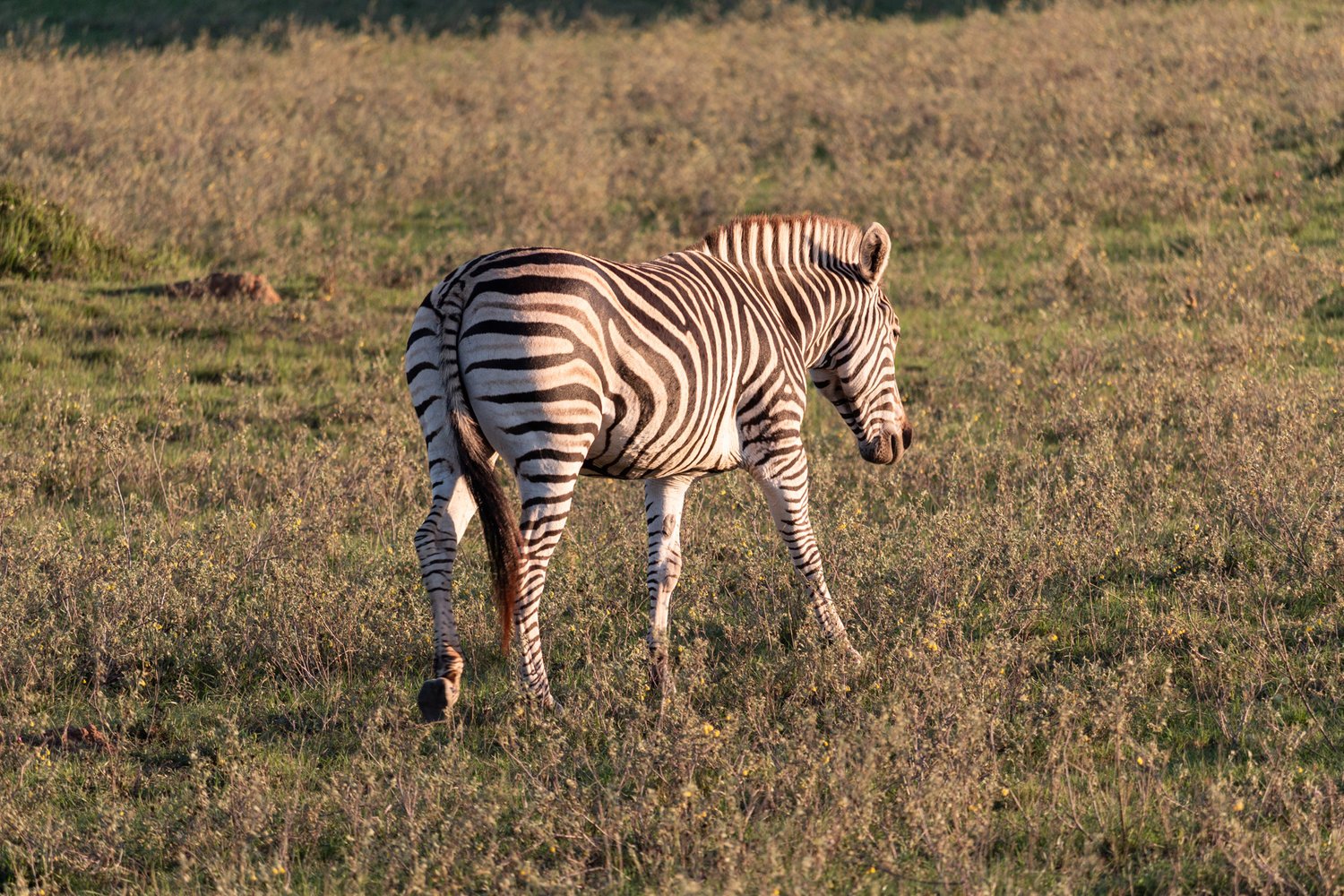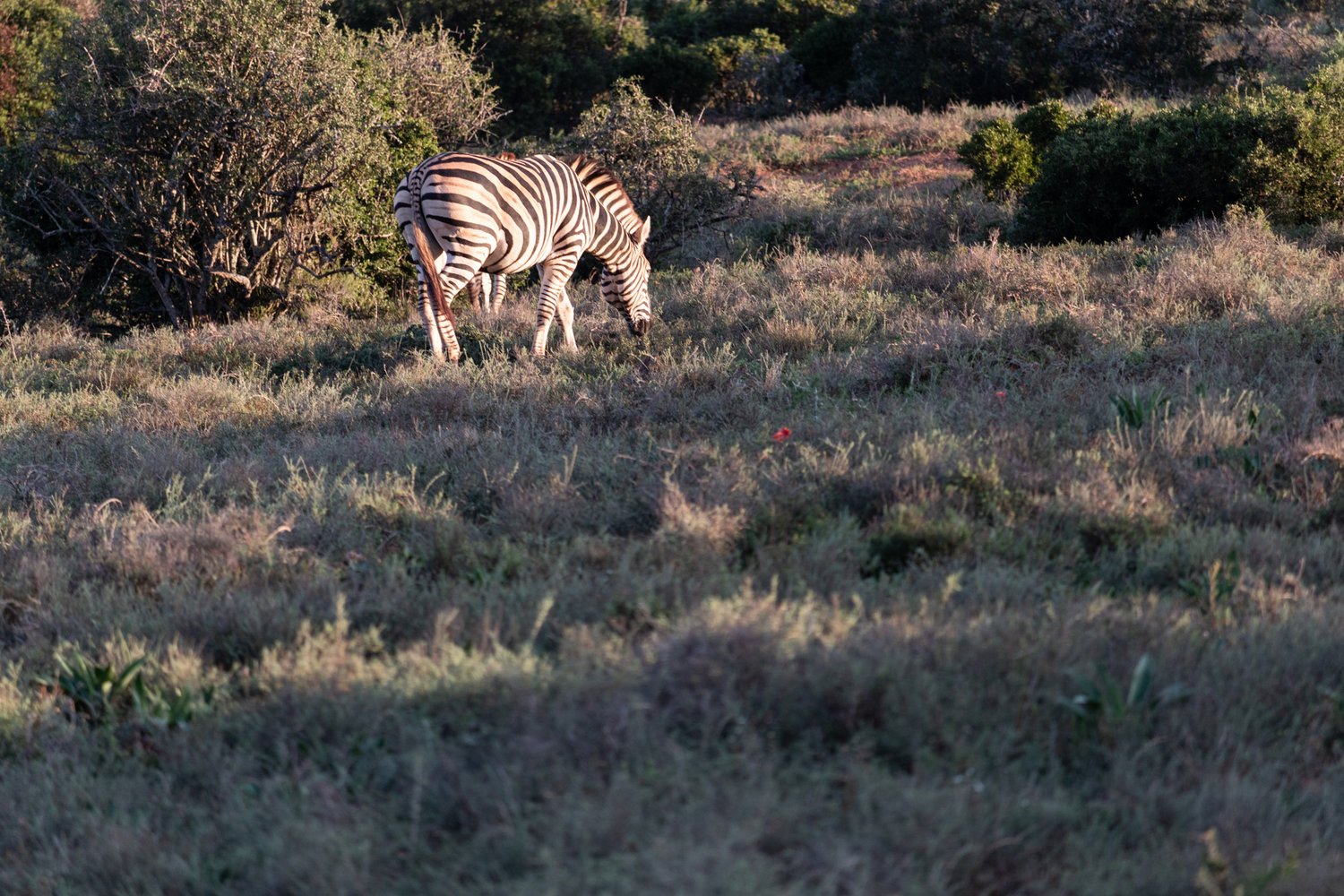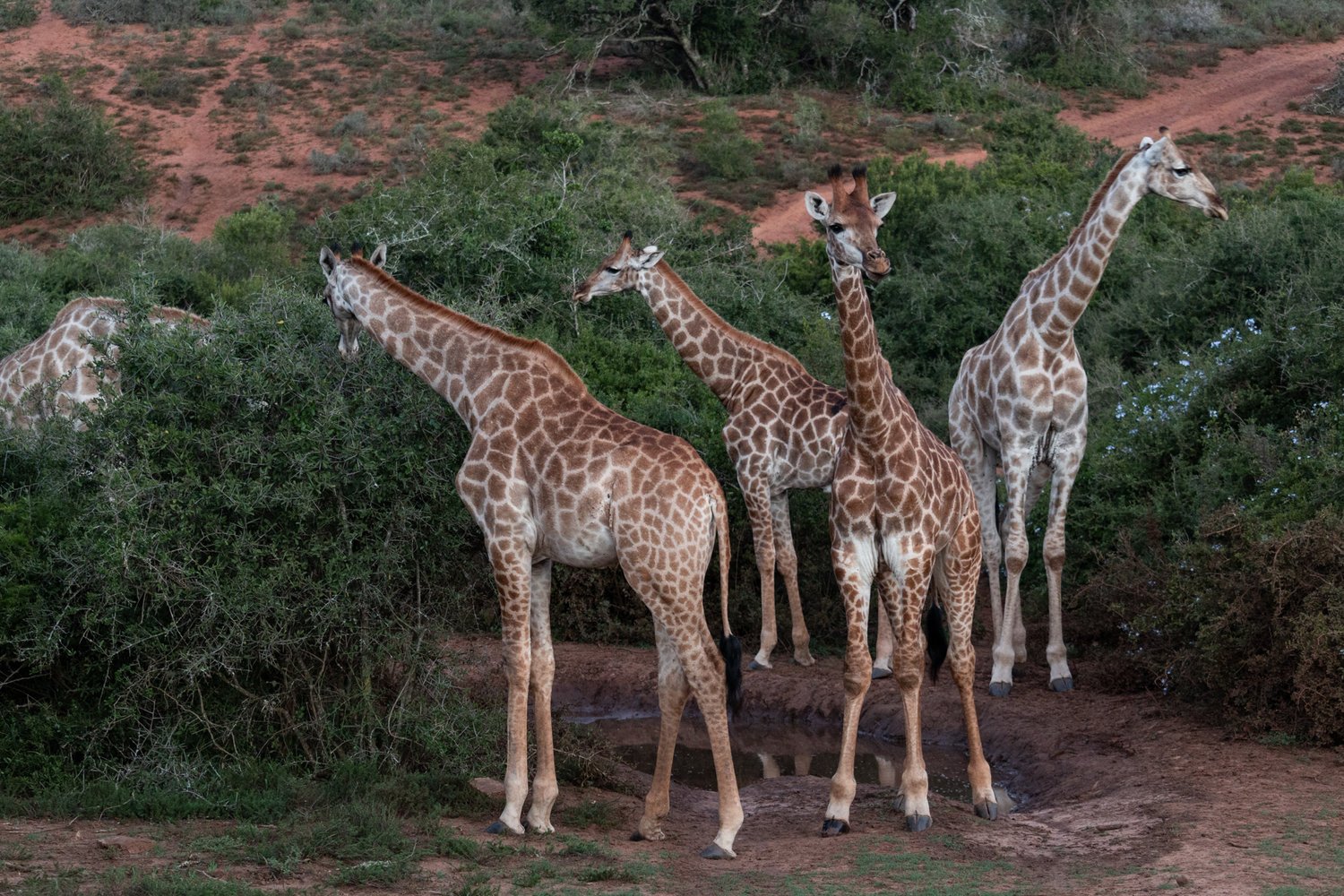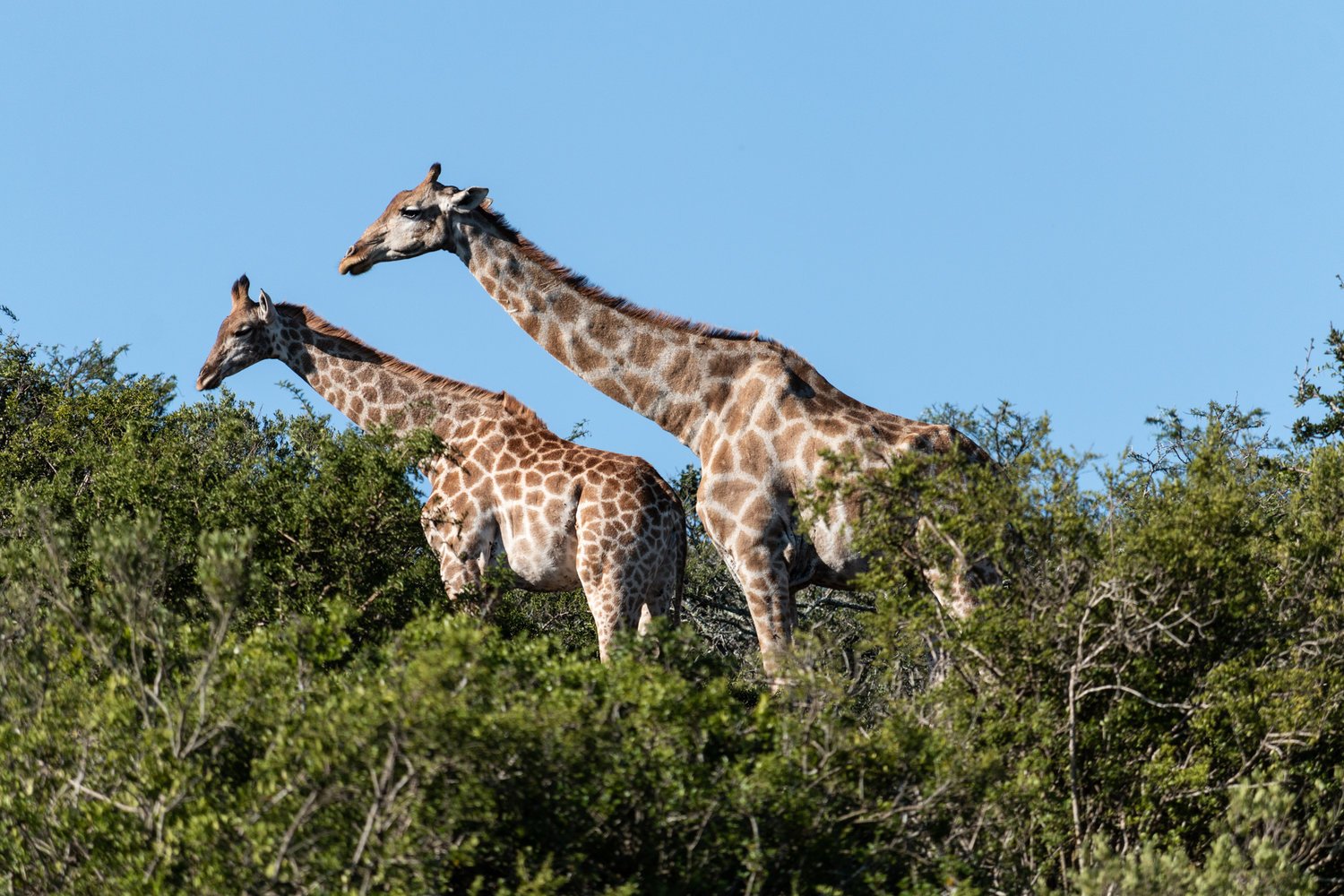Road Trip, South Africa
We’re very happy to have shared this itinerary with Drive South Africa for their Road Trip Explorer.
—
Africa evokes contrasting images: sun-drenched savannahs, stunning wildlife, and a captivating array of tribes, cultures, and traditions on the one hand and a dark colonial past, crushing poverty, pervasive corruption, and destructive wars on the other. It’s a massive continent that tends to dazzle travelers with the former and confront their preconceptions of the latter. After getting a taste of North Africa (a part of Africa very different from the Sub-Saharan) in Morocco last year, we wanted to see more of this immense and varied land; having started our African explorations at the northern end of the continent, we figured why not go next to the southern end?
Enter South Africa, a country that in many ways encapsulates all the imagery and stereotypes of Sub-Saharan Africa. Ten million tourists a year (one of the highest figures in Africa and in line with European destinations like Ireland and Switzerland) are drawn to South Africa for its incredible breadth of things to see, do, and learn about, and fortunately for westerners, it’s a relatively easy place to visit—English is widely spoken, the country’s tourism infrastructure is closer in quality and familiarity to Europe than Africa, and though crime and corruption is still a problem, with a little preparation and vigilance, visitors can usually avoid problems.
Our two-week itinerary started with 6 nights in Cape Town, followed by an 8-day self-driven road trip through the Garden Route (including a stop for 4 nights in the beach town Wilderness), and ended with two nights in Addo for safari. We will cover our trip in these three parts.
First, a few words on logistics, driving, and safety and security.
We preordered a SIM card from b4i.travel a couple of weeks before our trip. Preordering costs more than just buying a card on the spot once you arrive, but you get the benefit of receiving your South African phone number ahead of your trip, which you can share with family and friends and provide to restaurants and tour operators when making reservations. (Note that you do not receive the physical SIM card ahead of time. You pick it up on arrival to the airport.)
You will hear and read a variety of opinions on self-driving in South Africa. Whether or not you should consider it depends on your plan and where specifically in South Africa you’ll have the car (which carries with it implications for security).
Our plan lent itself to renting a car because we were doing a one-way road trip with lots of stops and we enjoy the flexibility and sense of adventure of driving ourselves on trips like these.
Car-related security wasn’t much of a concern for us for a few reasons. First, although risks of car-related crime are higher in cities, the only city we were spending significant time in was Cape Town and our accommodation there was behind 24/7 security. Second, we oftentimes opted to use Uber (which is popular and relatively inexpensive in Cape Town) to get us to and from the city center. This way we didn’t have to worry about parking.
Third, we followed some basic rules:
When driving, always keep your doors locked, windows up (or only cracked), and belongings out of sight. And be very mindful when stopped at red lights. Carjacking is a real risk in some parts of the country and smash-and-grab thefts are a risk most everywhere. So, for example, rather than placing our backpack on the backseat when driving as we normally would, we shoved it instead against the floor in the backseat so that it was out of sight and reach.
When parking, never give away that you may have something of value in your car. For example, if we were transiting between accommodations and our luggage was in the trunk of the car, we would never open the trunk after parking somewhere. If you need to get into the trunk, only do it when you’re about to leave the area. And of course, the rules about keeping things of value (or things that could be perceived as valuable—a thief doesn’t know a backpack is empty until after they’ve already smashed your window for it) out of sight apply even more when parking.
You’ll often come across car guards or parking attendants, especially in Cape Town. The idea is simple: they will help you park and watch over your car while you’re away in exchange for a small tip for their service (we usually gave R10-20 depending on how long we were parked). The car guards are not usually formally employed by the places in which they do business, and their usefulness is a persistent point of debate among residents and the government, but for now they are, for better or worse, an integral part of the self-driving experience in South Africa. We had only good experiences with them and we felt that our car was at least marginally safer under their watch.
Finally, in our experience, general road safety wasn’t much of a concern at all. It’s true that drivers can be aggressive, the quality of some roads is quite poor, and driving at night can be dangerous because of a lack of street lighting and the tendency for locals to walk on the side of the road with no regard for traffic. But we found driving in South Africa no more daunting than in parts of Europe known for aggressive drivers and difficult road conditions (parts of Italy, Greece, etc.).
One last note on driving. Be aware that slower-moving cars and trucks will often drive on the shoulder of the highway to let others pass (as it’s rare for even the main highways to have more than one lane in each direction). Thank them by flashing your hazards once you’ve passed them (trucks will often acknowledge you back with a flash of their high beams). If you are the one driving slower than the natural speed of traffic (which is sometimes much higher than the posted speed limit), then you should follow suit and allow drivers to pass or else they will quickly lose patience with you.
Security is not just a concern for the road. South Africa does suffer from high levels of crime, and you should follow some basic guidelines to stay out of trouble:
Leave the flashy jewelry and watches at home. It’s not worth making yourself a target.
Be thoughtful with when and where you show off your big, fancy DSLR camera. For example, when we were in central Cape Town, we’d take our camera out only when we wanted to use it; when we were done, we’d put it back in our backpack. We do not recommend bringing your DSLR to the townships.
Try not to stick out like a sore thumb. Anyone that looks like a tourist will be an easier target. Leave the visor, cargo shorts, and high white socks at home.
All of this said, please do not overestimate the threat of crime. Yes, parts of South Africa require awareness and vigilance, but do not assume that everyone is out to get you. Be vigilant, but also just open enough to meet the many genuinely friendly people. It may be helpful to remind yourself, for example, that if Cape Town were in the US, it would not have the highest murder rate in the country (St. Louis’ is higher, and Baltimore’s is roughly in line). Oftentimes we overestimate the safety and security of what is familiar to us and overestimate the threat of crime and violence in places that we have learned through the media and pop culture to fear.
OK, enough of all that!
Cape Town
We stayed at an Airbnb on a vineyard in Constantia. We liked staying in Constantia because it was very peaceful, but allowed for easy drives to everything we wanted to do in the area and was still convenient to central Cape Town (only a 20-minute drive with no traffic). Another benefit of the area is the range of restaurants. We had some of the best food of our two-week trip in the area:
Dinner at La Parada (patatas bravas, olives, burrata and tomatoes, veggie salad, truffle chips)
Dinner at Bistro Sixteen82 (patatas bravas, beet and broccoli salad, cheese fritters, arancini, peach and coconut tart with basil ice cream)
Dinner at Azure (veggie Cape Malay curry, gnocchi with beet sauce and corn)
The first thing that strikes any visitor to Cape Town is its breathtaking natural setting. Table Mountain dominates the cityscape from all directions. We got our first dose of this natural beauty at Kirstenbosch National Botanical Garden, where we entered at gate 2, walked down to and through the Boomslang Canopy Trail, up toward the start of the Skeleton Gorge hike up the back of Table Mountain, and then across back toward the car park where we stopped for lunch at Kirstenbosch Tea Room (Middle Eastern vegetarian platter, cucumber sandwich).
We appreciated views of the mountain and its surrounding landscape from Camps Bay and Signal Hill. (We didn’t hike Lion’s Head, but appreciated it from afar as a recognizable part of the landscape.)
We couldn’t resist the landmark for long, and on our first full day, with the sun high in the sky and nary a cloud in sight, we hiked up Table Mountain. The weather on the mountain is temperamental, and even when the conditions at sea level are sunny and clear, the mountain can be covered by the “tablecloth” (a thin layer of clouds and fog). Do as we did: plan to do the hike on your first full day in Cape Town, but be prepared with back-up days if the weather doesn’t cooperate so that you can ensure clear weather (check Windguru and Windfinder the days leading up to your hike). We were fortunate in that we had perfect weather conditions on the first day we planned to hike.
There are a few popular routes up the mountain; we chose Kasteelspoort for its dramatic views of the Atlantic and abundant morning shade. We started at the boundary of Table Mountain National Park above Bakoven, followed Theresa Ave Jeep Trail, took a sharp left onto Pipe Track, and then followed Kasteelspoort straight up to the “diving board”.
After a quick snack at the diving board (check out those views!), we set off northeast past Echo Valley toward the upper cable car station (where we grabbed takeaway lunch from the Table Mountain Cafe and bought one-way “hikers’” tickets down the cable car).
The V&A Waterfront is one of the more touristy bits of the city, but it’s worth a visit for a few reasons. First is the Zeitz Museum of Contemporary Art Africa—a museum for contemporary artists of African origin to display their work on the continent, notable as much for its architecture as its mission. We did a one-hour guided tour with one of the curators (included in the price of admission) which we highly recommend. After the tour we had some time to revisit some of the exhibitions we found most interesting. We especially enjoyed One Thousand Voices, TSIATSIA – Searching for connection, Five Bhobh – Painting at the End of an Era, Still Here Tomorrow To High Five You Yesterday..., and All Things Being Equal....
We followed our visit with a sweet snack of macarons at Lucy’s Tea & Confectionery at the V&A Food Market before continuing to the Watershed, a space for local artists and craftspeople to sell their wares (we picked up a small woven Zulu basket as a souvenir). Then we closed the day out with dinner at Ethiopian restaurant Addis in Cape (platter for two with four vegetarian dishes) and a stroll around central Cape Town’s galleries (mostly on Bree Street, Loop Street, and Long Street) for First Thursday (the timing of which was a happy coincidence). We even got to see artist Loyiso Mkize work on a painting in person!
Central Cape Town contains a few other noteworthy sights.
The Old Biscuit Mill (set among the buildings of a literal old biscuit mill) is home to a handful of shops and restaurants. Our time in Cape Town did not coincide with the weekly Neighbourgoods Market, about which we’ve heard very good things, but it was still worth a visit. We grabbed a tasty lunch at the nearby Three Feathers Diner (veggie burgers with avocado and feta cheese, fries, vanilla milkshake).
The Bo-Kaap is Cape Town’s oldest neighborhood and has an interesting history as Cape Town’s center of Cape Malay culture. Most people will recognize it for its very colorful and photogenic streets. We visited as part of Cape Town Free Walking Tours’ 90-minute tour, then wandered around ourselves and grabbed a refreshing ice cream at The Nice Company (apricot cheese, vanilla).
Signs of Britain’s colonial influence abound in Cape Town. One of the most British ways to experience it is with afternoon tea at Belmond Mount Nelson Hotel. We enjoyed strawberry vanilla and orange spice teas with vegetarian finger foods and gasped with delight at the sight of their dessert spread, which must be seen (and tasted) to be believed. We recommend strolling nearby quirky Kloof Street to walk off the meal.
There are a couple of worthwhile sights south of Cape Town and we dedicated a day to driving to see them. Fueled by lunch at the Foodbarn at Noordhoek Farm Village (veggie ratatouille, fried tofu on salad), we started at the southern tip of the Cape Peninsula, parking the car at -34.350648, 18.483837 (watch out for baboons!) and walking southwest to the Cape of Good Hope and back. The walk, mostly along a wooden boardwalk, offers stunning sea views and a detour down to picturesque Dias Beach.
We broke up our drive back toward Cape Town with a stop at the Boulders Penguin Colony in Simon’s Town. We parked at -34.197971, 18.453112 and walked from there to the main entry at -34.195758, 18.449290, which leads you to a walkway from which you can view the hundreds of penguins in the protected part of the colony at Foxy Beach. Tracing our steps back toward where we parked, we visited adjacent Boulders Beach, the unprotected part of the colony where visitors are free to intermingle (and even swim!) with the adorable birds.
Cape Town’s and South Africa’s beauty and allure are undeniable, but, as with any destination, the sights most heavily touristed offer only a partial view to life there. Visitors to Cape Town may notice the ramshackle housing lining the highway between the airport and the city center. For many visitors, this is their only brush with township life.
Townships are urban areas that originally developed to house non-white laborers and evolved during apartheid as explicitly segregated areas. These days, townships are still predominantly non-white and typically struggle with issues of unemployment, poverty, and crime.
We struggled with the concept of township tours while planning our trip. Are these tours “poverty porn” and “slum tourism”? We read a lot of material about township tour ethics in guide books, articles, and blogs ahead of our trip and eventually settled on the position that visits to townships show tourists the reality of life for many South Africans (and in fact the majority of Cape Town’s population) and, with the right tour operator, allow the townships to benefit economically from tourism and share their way of life (which goes a long way to improving cultural and community understanding and integration). We cannot stress the importance of picking the right tour operator—look for an operator that is deeply connected with the communities in which they visit and focuses on cultural immersion and learning over simple “sightseeing” (i.e., avoid operators whose tours spend more time inside the van than outside in the community). In our case we chose Vamos, run by Siviwe Mbinda and Garth Angus.
We had booked a group tour but nobody else booked our slot, so we found ourselves on a serendipitous private tour. Our tour guide Wandile, who grew up (and still resides) in Langa, led us through his home, sharing stories of the past, hopes for the future, and facilitating interaction with the locals. We learned about the work being done at the local community center and met some of the artists that lead youth programs to foster creativity for local children and steer them away from crime. And as we walked through different parts of Langa, Wandile led open discussions about topics that are typically sensitive and taboo—race, religion, class, poverty, and politics.
What struck us the most was that townships are not places distinct or separate from Cape Town. And they are not lawless, hopeless shantytowns. Townships are integral, fully-functioning parts of Cape Town with schools, playgrounds, hospitals, places of worship, police, utilities, transit stations, and local businesses. Many of the employed people commute into central Cape Town in shared taxis and some residents have family that live in and around central Cape Town. In fact, Wandile at one point in his life moved away from Langa but missed the strong sense of community and ended up moving back. The quality of life in townships is not necessarily bleak and residents do not necessarily have ambitions to leave.
In fact, it is possible to be financially successful and move up the economic ladder without having to move outside of the township. We were struck by the economic stratification in Langa—some people live in very small homes converted from shipping containers, but others live in detached homes with driveways and backyards. And though there are sections of Langa that are makeshift and quite decrepit, these parts of the community are small.
After spending the morning in Langa, we jumped back in the van and drove to the other side of the N2 highway to Guguletu for lunch at world-famous Mzoli’s. They’re known for their grilled meat, but we settled for delicious makande (a warm bean and corn salad) and chakalaka (a spicy salsa).
Our visit to Cape Town would not have been complete without our time spent in Langa. What you see from the highway tells only a small and misleading part of the story of these communities. And to the question that concerned us from the beginning: to define township tourism as “poverty porn” or “slum tourism” would be to define townships as poverty-stricken slums, and this is an unfair and incomplete characterization that we reject.
Note: We abstained from photography in Langa and Guguletu.
Our visit to Cape Town was an exhilarating assault on the senses and a fitting introduction to South Africa. Next, stories and photos from our road trip eastward!
The heartbreak of bidding farewell to Cape Town was assuaged by the excitement of what lay ahead between us and Addo, a route known as the Garden Route. Driving straight through to Addo on the quickest route would take about 9 hours, but we broke the drive up over 8 days, taking scenic detours when possible and spending some time by the beach and at other noteworthy destinations along the way.
The Garden Route
Our first stop was the Cape Winelands, barely an hour outside of Cape Town. If Constantia is a preview of what South Africa’s wine country has to offer, then the Cape Winelands is a feature film, showing the best of the country’s vineyard scenery, wine culture, and culinary proficiency. After a scenic drive over Helshoogte Road, we emerged at Babylonstoren, a Cape Dutch farm whose grounds and vistas one could imagine adorning the cover of a travel guidebook. We browsed the farm shop, watched the bakers bake bread, appreciated the characteristic architecture, and walked through their picturesque garden, where a fragrant scent of herbs hangs in the air.
We finished with lunch at the Greenhouse (halloumi, pesto, and chutney sandwiches with lemonade) before heading to the charming and sophisticated town of Franschhoek, where we grabbed dinner at Cafe des Arts (cauliflower steak, mashed potatoes, veggie penne) and stayed at The Corner House Guest House. (Many would argue that Franschhoek is South Africa’s foodiest town, and it is indeed home to some of South Africa’s finest restaurants, but their menus are not usually vegetarian-friendly.)
In the morning we drove via Franschhoek Pass (scenic mountain road) and Clarence Drive (scenic coastal road) down and around the eastern shore of False Bay. We stopped at Steenbras Nature Reserve for the tranquil Crystal Pools hike that follows the Steenbras River into a gorge and eventually to a collection of ponds and waterfalls for which the hike is named. The reserve allows only a few dozen people on the trail each day, so despite its proximity to the R44 and Cape Town, we felt a world away. (Note that you must book permits at least two working days ahead of your hike.)
After the hike we continued our drive to the southeast, stopping at Hermanus for dinner at Pear Tree Bistro (cauliflower steak, garden salad with labneh) and a much-needed night’s rest at Auberge Burgundy.
The following morning, we set off on the five-hour drive to Wilderness (the longest of the trip). The most direct route is about 1 hour 20 minutes quicker, but we opted for a more scenic one: we took the N2 to Swellendam, turned off onto the R324 for lunch at rustic Paradise Organic in Suurbraak (meze platter) and a scenic drive over Tradouw Pass, and then followed the R62 all the way to Oudtshoorn before heading back toward the coast to get to Wilderness.
We stayed at Cinnamon Boutique Guest House in Wilderness for 4 nights. Our main goal in Wilderness was rest and relaxation. We spent parts of each day at the town’s expansive beach on the Indian Ocean, which offers enough space to ensure every beachgoer a private space. The sea around the southern tip of Africa is quite rough, with strong currents and large waves thanks to the meeting of the Benguela and Agulhas currents.
You really get a sense of Southern Africa’s infinite stretches of beach-fringed coastline from Dolphin’s Point, where you can appreciate views in one direction of the coastline and in the other of the Kaaimans River Railway Bridge. A short drive up Hoogte Road brings you above town to the Map of Africa viewpoint, where you can look over a landscape of the Kaaimans River, the surrounding forest, and the mountainous Witfontein Nature Reserve in the distance that vaguely resembles the shape of the African continent. While you’re in the area, don’t miss the views down to the ocean from the adjacent paragliding launch spot at -33.993884, 22.559562.
We broke the beach time up with a day-trip to Knysna, where we gawked at the views of the dramatic rocky coastline from a viewpoint at The Heads (park at -34.078945, 23.062604). Back toward the center of town, we perused the beautiful collection of home goods at Weylandts on Thesen Island. On our way back to Wilderness, we detoured to Buffelsbaai to visit the beach at -34.084779, 22.959444 for a walk along the water and among the jagged rock formations.
Wilderness is home to several tasty restaurants, most with a bohemian beach town vibe. We had dinners at laidback Flava Cafe (veggie Hawaiian burger, brownie sundae), rural Zucchini Restaurant (veggie burger, spicy pesto pasta, milk tart chocolate roll), and last but not least, upscale Serendipity (potato salad, tomato tea soup, lemon slurpy, beetroot risotto with pumpkin dhaltjies, malva pudding), which deserves all the praise it receives and, in our opinion, is an essential Garden Route dinner stop. And as a bonus, we came home to complimentary fudge on our pillows in our hotel room each evening!
After 4 nights in Wilderness, we set off eastward for the last leg of our road trip. Robberg Nature Reserve is set on a rocky peninsula just outside Plettenberg Bay and offers three hiking trails: the Gap (2.1km / 1.3mi), Witsand (5.5km / 3.4mi), and the Point (9.2km / 5.7mi). We opted for the middle hike, which first brought us along the north side of the peninsula with views down to the sparkling turquoise water (and dozens of seals floating about!). About halfway out, the trail meets with a large sand dune that cuts across the peninsula; we followed the dune down to a dramatic isthmus-like beach and island on the south side of the reserve. From there we clambered over the rocky southern-side path back toward the trail head.
That afternoon we arrived at Assegaaibosch Country Lodge for a one-night stay to break up the drive. In hindsight, we wish we just powered through to Addo because the hotel felt like it was out of the Twilight Zone and we would have preferred a full morning at the Elephant House.
Few experiences epitomize Africa more than a safari, and South Africa is one of the continent’s top safari destinations. Kruger is the jewel in the country’s national park crown, but we chose to spend our first safari experience at and around Addo Elephant National Park.
Addo Elephant National Park
Safaris can be very expensive, and oftentimes the most convenient and popular accommodations options are luxury camps inside the park, where the sky-high rates include meals and game drives. You can easily spend over $1,000 per night at these kinds of places. We were worried that we’d be missing out on something by opting for a lower-priced and less all-inclusive (though, to be clear, still by no means inexpensive) hotel outside of the park, but our worries were whisked away by the wind the minute we arrived at the Elephant House for our 2-night stay: the top-notch service, beautiful architecture and décor, spacious and well-equipped rooms, copious outdoor chill out spots, and relaxing pool area all made us feel welcome, at home, and comfortable. Not to mention the tasty outdoor breakfasts (fruit, yogurt, granola, French toast), light lunches served poolside (hummus, cucumber, and tomato sandwiches), and an amazing dinner by candlelight (veggie puff with sweet chili sauce, lentils with mixed veggies, fruity lemon tart).
The Elephant House offers à la carte game drives at an additional cost, allowing guests to mix-and-match game drives to tailor their safari experience. Some of the game drives are run by the hotel with their own guides and some are offered via partnerships with other tour operators or private reserves. We chose the hotel’s own afternoon elephant drive in the national park for our first day. Day two brought us to Schotia Private Game Reserve, adjacent to the eastern side of the national park, for their afternoon/evening “Tooth & Claw” safari, which included a fireside dinner at their lapa (an open thatched-roof structure popular in South Africa) (rice, potatoes, acorn squash, mixed veggies, malva pudding).
It’s cliché to say that an experience like this is a life-changing one, but we can’t really describe it any other way. Many of our fondest memories from our two weeks in South Africa are from these two days of safari: driving alongside a lone elephant walking majestically across the open landscape; being the first group to chance upon three lions basking in the golden, late afternoon sunlight; stumbling on half a dozen giraffes at a watering hole at dusk; getting caught at twilight among a herd of two dozen buffalo and then driving the car at a low speed in the middle of the group. It’s hard to describe the feeling of connection to the earth and the life around you when pulling up to a beautiful wild animal mere feet away, turning off the engine, and learning about them from our guides, stretches of silence breaking only for the low, hushed tones of our guides, gasps from the people in our group, and the organic sounds of nature, all while we observed the scene as a proverbial fly on the wall, like an out-of-body experience of sorts. Even sightings of the most common animals lost no sense of awe and wonder; our tenth zebra sighting was just as special as our first. Other animal sightings included: waterbucks, impalas, crocodiles, monkeys, ostriches, warthogs, tortoises, rabbits, and dung beetles.
Our safari experience was an awe-inspiring finale for our trip, but it made leaving that much harder. The morning after our last night, we drove to Port Elizabeth, dropped off the car, and flew to Johannesburg, where we made the best of our 8-hour layover at Quills Restaurant (in the lobby of the Intercontinental right outside the terminal) before flying back to London.



























































